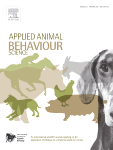Document type: Scientific review published in Animals
Authors: Daniel Mota-Rojas, Fabio Napolitano, Ana Strappini, Agustín Orihuela, Marcelo Daniel Ghezzi, Ismael Hernández-Ávalos, Patricia Mora-Medina, Alexandra L. Whittaker
Preview: We pose, based on a neurobiological examination, that events that occur around the time of slaughter have the potential to intensify the pain response, through the processes of sensitisation and enhanced transmission. Sensitisation, or an enhanced response to painful stimuli, is a well-discussed phenomenon in the human medical literature, which can arise from previous injury to an area, inflammatory reactions, or previous overstimulation of the stress axes. A number of events that occur prior to arrival at, or in the slaughterhouse, may lead to presence of these factors. This includes previous on-farm pathology, injuries arising from transport and handling and lack of habituation to humans. Whilst there is limited evidence of a direct effect of these on the processes of sensitisation in animals at slaughter, by analogy with the human neurobiology literature the connection seems plausible. In this review a neurobiological approach is taken to discuss this hypothesis in the light of basic science, and extrapolations from existing literature on the slaughter of ruminants. To confirm the postulated link between events at slaughter, and processes of hypersensitisation, further dedicated study is required.






